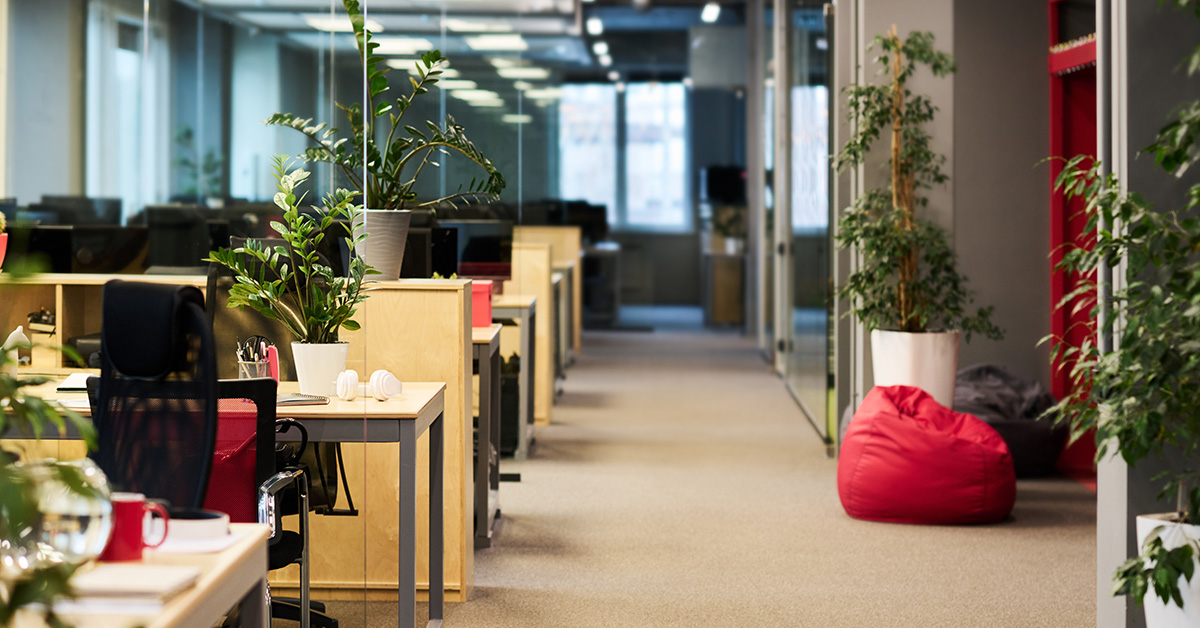Guide to Coworking Spaces: Sustainable Office Solutions Explained
Coworking spaces have evolved into a cornerstone of the modern workplace, offering flexibility, shared amenities, and a collaborative environment. As the global workforce moves toward hybrid and remote models, these shared spaces are becoming vital—not just for startups and freelancers, but also for corporations and remote teams. A growing trend within this segment is sustainability, with coworking spaces increasingly designed and managed to reduce environmental impact. This guide explores how coworking spaces contribute to a greener, smarter working world.
Understanding Coworking Spaces and Sustainability

Coworking spaces are shared work environments where individuals and businesses can rent desks or private offices on flexible terms. Unlike traditional offices, they come fully equipped with amenities like Wi-Fi, meeting rooms, lounges, and kitchens.
Sustainability in this context refers to the adoption of practices that reduce ecological footprints—such as using renewable energy, optimizing space usage, implementing waste-reduction strategies, and encouraging community-based collaboration.
This dual purpose—flexibility and eco-friendliness—makes coworking spaces a compelling solution for today’s workforce.
Why Sustainable Coworking Spaces Matter
1. Workforce Changes and Urban Constraints
As remote work and freelancing gain traction globally, the demand for flexible, non-traditional office setups has grown. At the same time, urban areas face increasing environmental pressures—waste, energy consumption, and traffic congestion. Coworking spaces provide an answer by:
-
Reducing daily commuting (especially when located in residential hubs)
-
Using energy-efficient designs
-
Hosting multiple companies in shared infrastructure
2. Benefits for Businesses
Businesses of all sizes now recognize that sustainable practices can align with cost-efficiency and brand image. Coworking spaces often come with:
-
Shared resources (cutting costs and carbon footprints)
-
Green certifications (like LEED or BREEAM)
-
Employee satisfaction from healthy, well-lit, and ergonomic spaces
3. Environmental and Social Responsibility
Today’s professionals are conscious of their carbon footprint, waste generation, and energy usage. Coworking spaces that implement recycling programs, indoor air quality monitoring, and community sustainability projects appeal to this demographic.
Latest Trends and Developments (2024–2025)
1. Green Architecture Integration
Coworking spaces built in 2024–2025 often incorporate biophilic design elements—like indoor plants, natural light, and air purification systems. Some leading operators have started integrating solar panels, smart thermostats, and rainwater harvesting systems.
2. Hybrid Work Enablement
Post-2023, companies increasingly opt for “hub-and-spoke” office models, with headquarters as the hub and coworking spaces as spokes. This decentralization has led to growth in regional and suburban coworking spaces.
3. ESG Reporting and Compliance
Environmental, Social, and Governance (ESG) metrics are now standard in investment and corporate performance evaluations. Coworking spaces are being used as part of ESG strategies by firms aiming to improve sustainability scores without investing in entire green buildings.
4. Circular Economy Practices
Some operators, especially in Europe and Southeast Asia, are adopting reuse-based design philosophies, using upcycled furniture, modular walls, and zero-waste operations.
Laws, Policies, and Certifications That Apply
India
-
Energy Conservation Building Code (ECBC) governs how commercial spaces should manage energy use.
-
Coworking providers can benefit from green building incentives and local municipal rebates for sustainable construction.
European Union
-
EU Taxonomy for Sustainable Activities (2022) impacts how businesses and landlords must disclose environmental impact.
-
Coworking operators can align with EU Green Deal goals to attract environmentally focused startups and SMEs.
United States
-
LEED (Leadership in Energy and Environmental Design) certification is often sought by coworking companies to boost credibility.
-
Some states, like California, offer tax rebates for buildings using renewable energy.
Japan
-
Sustainability is guided by national goals aligned with the 2050 Carbon Neutrality Pledge, encouraging adoption of zero-emission buildings (ZEB).
-
Tokyo Metropolitan Government supports green construction with subsidies and permits for shared office spaces.
These laws ensure that sustainability in coworking is not just voluntary—it’s increasingly expected and incentivized.
Useful Tools and Resources for Sustainable Coworking
| Tool/Resource | Purpose | Website/Provider |
|---|---|---|
| LEED Certification Guide | Helps evaluate environmental performance | US Green Building Council |
| SpaceOS | Smart workspace management platform | spaceos.io |
| Desana | On-demand access to sustainable coworking spaces | desana.io |
| WELL Building Standard | Focus on occupant health and wellness | International WELL Building Institute |
| Sustainability Calculator | Measure emissions and savings from shared offices | My Green Lab, Carbon Trust |
Frequently Asked Questions (FAQs)
Q1: What makes a coworking space sustainable?
A sustainable coworking space uses energy-efficient appliances, renewable energy sources, eco-friendly building materials, and implements practices like waste recycling, water conservation, and public transport access encouragement.
Q2: Is coworking more eco-friendly than traditional offices?
Generally, yes. Because coworking spaces consolidate multiple businesses into a shared environment, they lower per capita energy use, emissions, and material waste compared to single-tenant offices.
Q3: Are there certifications to identify green coworking spaces?
Yes. Look for spaces with LEED, WELL, or BREEAM certifications. These labels indicate compliance with international standards for environmental and wellness-focused design.
Q4: How can individuals contribute to sustainability in coworking spaces?
By practicing responsible resource use: bringing reusable water bottles, minimizing printing, turning off devices when not in use, and participating in community sustainability initiatives offered by the space.
Q5: Are sustainable coworking spaces more expensive?
Not necessarily. While upfront construction or retrofitting costs may be higher, operational costs tend to be lower over time due to efficient resource usage. Many spaces also offer tiered pricing models to suit different budgets.
Conclusion
Sustainable coworking spaces blend modern work needs with responsible design and environmental awareness. As remote work, climate goals, and smart urban planning converge, these spaces offer a path forward—not only for individual productivity but for a healthier planet.
Whether you're a freelancer looking for a flexible desk or a company aiming to align with ESG targets, coworking spaces provide an innovative and practical solution rooted in sustainability. Keeping up with trends, policies, and tools ensures both users and providers stay ahead in this evolving landscape.